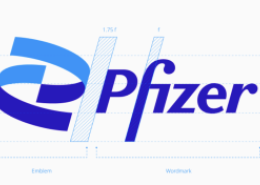Maraviroc Reduces HIV Viral Load in Treatment-Naive Patients, 48 Week Data Show
(BUSINESS WIRE)--Rates of virologic suppression in patients receiving Pfizer’s novel CCR5 antagonist, maraviroc, compared to efavirenz (EFV) were 70.6% vs. 73.1% for <400 copies/ml and 65.3% vs. 69.3% at <50 copies/ml in the full analysis set (FAS) study population (n= 360, maraviroc/ n= 361, efavirenz), according to a late breaker presentation at the International AIDS Society conference in Sydney, Australia. Increases in CD4+ cell counts from baseline were also greater with maraviroc (+170 cells/mm3) than with EFV (+144 cells/mm3).
The 48-week MERIT trial (maraviroc versus Efavirenz Regimens as Initial Therapy) evaluated the antiretroviral activity of maraviroc (300 mg, twice daily) compared to EFV, a current standard of care (600 mg once daily), both dosed with zidovudine/lamivudine in CCR5-tropic HIV-1 infected patients who had never received antiretroviral therapy and had no evidence of resistance to any of the drugs used in the study. This study was conducted in both the Northern and Southern hemispheres.
A separate analysis was also done for the per protocol population (n=633) which showed rates of virologic suppression for patients receiving maraviroc as compared to EFV were 75.3% vs. 78.9% for <400 copies/ml and 65.2% vs. 69.2% at <50 copies/ml.
Half as many patients taking maraviroc (1.7%) experienced a “category C” AIDS defining event, such as infection or malignancy, compared to those taking EFV (3.3%).
“These data are very exciting,” said Michael Saag, Professor of Medicine and Director of the Center for AIDS Research at the University of Alabama at Birmingham, who presented the results. “The CD4 benefit and the tolerability profile observed in patients treated with maraviroc are particularly interesting.”
Fewer patients experienced grade 3 or 4 adverse events in the maraviroc arm than in the EFV arm. Lipid abnormalities were more frequent in the EFV arm. The most common side effects associated with maraviroc therapy were nasopharyngitis and bronchitis. EFV was associated with more dizziness, diarrhea, abnormal dreams, and rash. The rate of grade 3/4 transaminase elevations was similar between the two treatment arms. The overall incidence of malignancies was also lower in patients receiving maraviroc compared to those receiving EFV.
The number of discontinuations was similar between both treatment groups in the trial with more patients discontinuing efavirenz due to adverse events and maraviroc due to decreased efficacy.
Discovered by Pfizer scientists in 1997, maraviroc is an oral medicine that blocks viral entry to human cells. Rather than fighting HIV inside white blood cells, it prevents the virus from entering uninfected cells by blocking its predominant entry route, the CCR5 co-receptor.
Maraviroc recently received a positive opinion from the European Agency for the Evaluation of Medicinal Products' (EMEA) Committee for Medicinal Products for Human Use (CHMP) and an approvable letter from the Food and Drug Administration (FDA) for use in treatment-experienced patients.
Maraviroc is currently being made available through a multi-national Expanded Access Program, a clinical study that provides maraviroc to patients with CCR5 tropic HIV-1 who have limited or no approved treatment options due to resistance or intolerance to existing drug classes.
DISCLOSURE NOTICE: The information contained in this release is as of July 25, 2007. Pfizer assumes no obligation to update any forward-looking statements contained in this release as the result of new information or future events or developments.
This release contains forward-looking information that involves substantial risks and uncertainties regarding a product candidate that is under review by the FDA and the EMEA. Such risks and uncertainties include, among other things, whether and when the FDA and the EMEA will approve the product candidate, their decisions regarding labeling and other matters that could affect its availability or commercial potential, as well as competitive developments.
A further list and description of risks and uncertainties can be found in Pfizer’s Annual Report on Form 10-K for the fiscal year ended December 31, 2006 and in its reports on Form 10-Q and Form 8-K.
Shreya Prudlo, 212-733-4889








